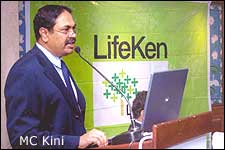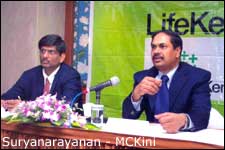There has been a sharp decline in the number of cases being filed in Mumbai's consumer courts.
It took George Thomas, a technician in Mumbai, 14 years to get justice from Mumbai’s consumer court. Thomas was involved in a long-drawn fight against Maharashtra’s City Industrial Development Corporation (CIDCO). On the day of the final judgment recently, the court ordered CIDCO to pay him Rs 5 lakh as compensation. Thomas walked away — victorious, but also a very tired man.
The inordinate delay in disposing of cases such as those of George Thomas is one reason Mumbaikars are staying away from the city’s consumer courts. In fact, last year, the city with a population of almost 1.5 crore, saw fewer than 1,000 cases being filed in its three district consumer courts. In two of these fora, the number of complaints had declined to between a fourth and fifth of the number of cases filed in 2001.
“The consumer is either very happy with his services or has lost faith in the consumer redressal system,” quips Dr Manohar Kamath, a consumer activist in Mumbai. Agrees Jehagir Gai, another consumer activist in Mumbai, “There has been a 50 to 60 per cent decline in the rate of filing complaints in Mumbai’s district consumer courts since 1999.”
The filing of complaints is often directly proportional to the number of cases the court has disposed of in recent years and months. “Petitioners usually go to the court’s registrar to find out about the number of pending cases. If there are too many pending, most of them decide against filing in the consumer court as they’d rather not waste their time,” says Dr Kamath.
Right now, as many as 14,539 cases are pending before the State Consumer Redressal Commission, Mumbai. And of the 1,61,279 cases filed in the various consumer courts in Maharashtra ever since their inception, only 45,649 have been disposed of so far.
If the government acts upon a recent directive of the Bombay High Court (arising out of a public interest litigation filed by the Consumer Courts Advocates Association of Maharashtra and Goa), Mumbai, together with five other districts of Maharashtra, will get an additional district consumer forum.
But will that help clear the backlog of cases in consumer courts? Perhaps not, say experts. While adding to the number of consumer courts may go some way towards easing the burden of existing courts, the real malaise of Mumbai’s consumer courts seems to lie elsewhere. Most activists feel that more than infrastructure, it is the style of functioning of the lawyers and the judiciary of the consumer courts that needs to change.
These courts were designed to dispense justice in not more than 90 days. But a look at some numbers tells the story of their performance. For example, of the 1,074 cases disposed of in Mumbai’s consumer courts last year, only 37 were resolved within 90 days. Again, in two of its three district fora, only two and three cases, respectively, were disposed of in the required time frame.
“Lawyers are mostly interested in prolonging cases,” says Justice Suhas Barve, a retired district court judge and president of the Thane District Consumer Redressal Forum. “They often come unprepared, for which I do not hesitate to scold them in court,” he adds.
But as Dr Kamath points out, “While lawyers are the main culprits when it comes to wasting the court’s time, judges are also to be blamed for allowing this to happen.” Justice Barve concurs. “Thirty to 40 per cent of the consumer court judges are responsible for causing delays,” he says.
And sometimes things can take a bizarre turn. Gai mentions one consumer forum “that remained closed for months as the judge suffered from health problems.”
Furthermore, many judges add to the general inefficiency by turning up late for hearings. “In my 10 years’ experience in consumer courts, I have never seen a judge coming in before 11.30 am,” says P.C. Singhi, a retired IAS officer and consumer activist in Mumbai. This, despite the fact that the working hours of consumer courts are supposed to be from 10.30 am to 1 pm and 2 pm to 4 pm.
The recent PIL filed by the Consumer Courts Advocates Association describes Mumbai’s district consumer court judges as being largely disinterested in the speedy disposal of cases and as not being held accountable for their actions. But Justice Barve, who is known for the speed with which he deals with his cases, says he has been disposing of 50-60 cases a month. To try and clear the backlog, he has been focusing on those that have been pending from 1991 to 2003, leaving the more recent ones to two of his colleagues.
The Consumer Protection Act advocates an ideal disposal rate of 75 to 100 matters a month. But even this figure, Dr Kamath says, is too low. “If each of the three judges in a court were to deliver six judgements a day, it would mean getting rid of about 132 cases a month.”
Is that too much to ask?







